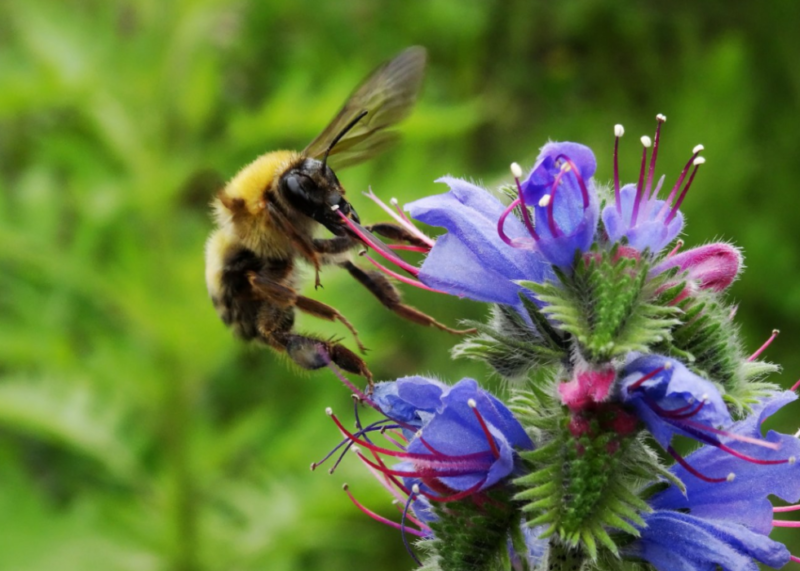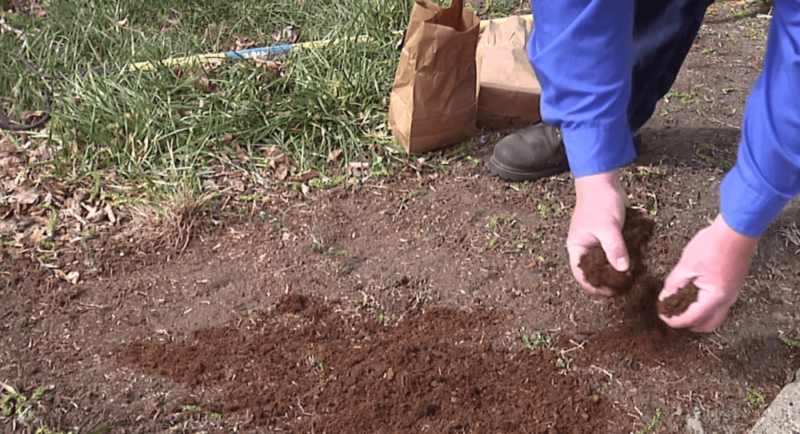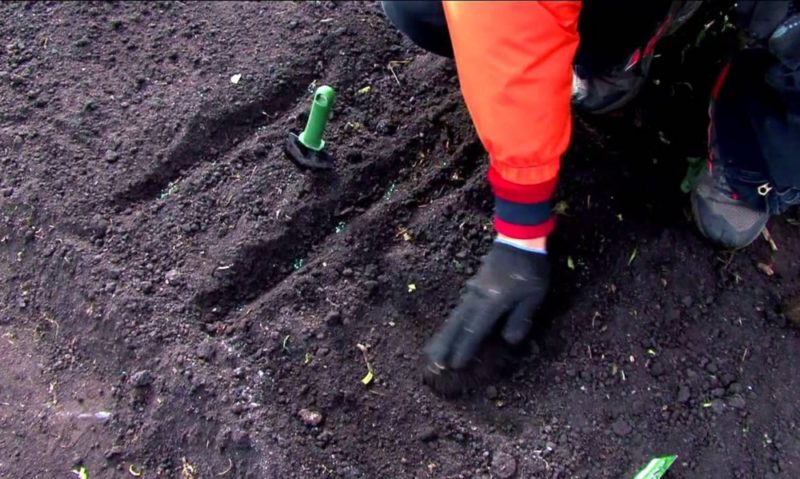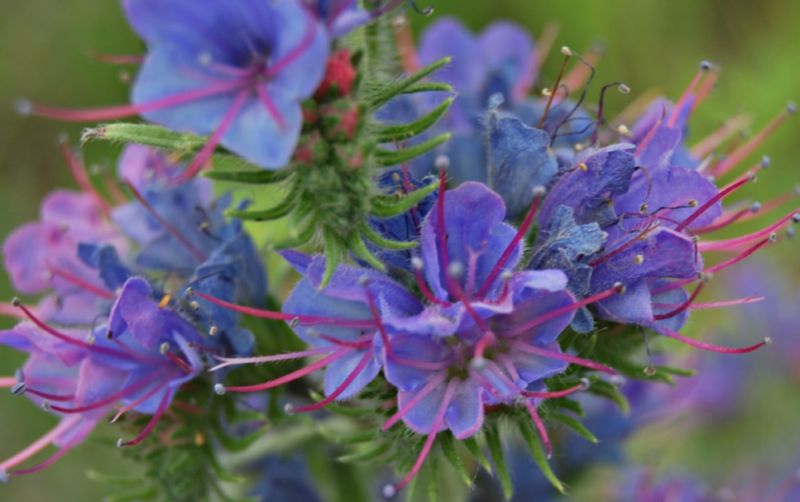An ordinary bruise is really the most ordinary, at first glance, plant, which is a weed! It is removed from the garden for one simple reason: it is a poisonous plant. But in beekeeping, grass is valued, as bees love it, and honey obtained from bruise nectar is very good for health. Today we will tell you in what terms a bruise is sown in apiaries, how it is taken care of, in which areas it is used.
Material Content:
Description of common bruise
To understand what a plant is, you need to familiarize yourself with the description of the species. The grass is perennial, and its height can vary between 50-180 cm. Flowering of a typical variety does not occur the first year after sowing, bud buds appear only in the second year of plant life. But today several varieties have been bred on which flowers bloom in the summer of sowing.
The stalk of a bruise (Latin Echium vulgare) is long, during flowering it is decorated with flowers similar to bells, whose diameter is only 2 cm. At the beginning of flowering, the color is pale pink, but then begins to play with a cornflower hue. In one season, up to one and a half thousand flowers can bloom on the plant, but their lifespan is very short - only two days. Flowering due to this is long (some flowers replace others).
Valuable nectar is found in flowers only during the period of their primary color (pale pink), pollen is not washed out by precipitation, so rains do not affect the plant's yield in any way.
After the inflorescences wither, in place of the buds, fruits are formed, somewhat similar to nuts. Inside these boxes are seeds, they become the material for reproduction.
On stems along the entire length, spiked bristles grow, due to which the plant can do without watering for a long time. The honey plant is an ordinary bruise, like a cactus, with the help of these spines it retains moisture inside itself, therefore it tolerates dry seasons.
The bruise is also experiencing drought due to its long root, which already in the first year of life grows into the soil to a depth of 60 cm. The root is in the form of a rod, like a dandelion. It is very difficult to uproot if there is a need to clear the plantation.
Grass ordinary bruise loves a dry and warm climate, dense soil. You can meet the plant in the fields, in meadows, in wastelands, which interferes with grazing, because the plant is poisonous. A bruise grows in southern Siberia, in Asia and throughout Europe.
The plant lives 2 years. It begins to bloom in the second season (there are varieties, as we have already written, blooming from the first year) in June, and lasts until the first frosts, and this is 2-3 months! Common bruise is a very viable and difficult to remove grass from the site. It is dangerous to human health, because it contains consolidoin glycoalkoloid, which in large doses and if used incorrectly in folk medicine can cause central nervous system paralysis.
In what areas is applied
From pollen, bee plants create delicious, unique in properties and very healthy honey. But this is far from the full scope of the bruise.
The grass is used not only for feeding bees, the whole plant is involved. In folk medicine, decoctions, tinctures are made from the stem, foliage and root. It is used both fresh greens and in dried form.
The plant contains poisons that are dangerous to human life (consolidin and cinoglossin), therefore, when preparing the medicine, the concentration of raw materials must be strictly observed.
An infusion of ordinary bruise is really a find for doctors, because, in addition to poisons, it contains many acids, combinations of which are not found in any plant, vitamins, alkaloids and glucose.
A powder is prepared from the greenery of the plant. Based on it, a decoction is made that works as a cough-removing agent and a sedative.
The recipe is as follows:
- 1 tsp bruise powder pour 250 ml of boiling water.
- Bring to a boil, cook for 15 minutes.
- Strain and cool, take 1/3 cup three times a day.
We will talk about the beneficial properties of honey separately.
Useful properties of bruised honey
Honey is the most valuable product obtained from the common bruise.
The use of goodies inside and out:
- epilepsy;
- whooping cough;
- for blood purification;
- gout;
- sprain;
- bronchitis;
- cold cough;
- laryngitis;
- arthritis.
Honey has excellent wound healing and disinfecting characteristics, therefore it is applicable for the treatment of ulcers of the oral mucosa and skin, bruises, wounds, burns, abscesses, hematomas. It is also used in general therapy to improve the condition of arthrosis, osteochondrosis, and other pathological conditions of the musculoskeletal system.
Bruised honey is an excellent assistant in the treatment of colds, acute respiratory viral infections, and flu. The tool will help get rid of cough and will work more productively, coupled with a decoction (the recipe is prescribed above).
Honey is used for gastrointestinal disorders, and liver diseases. It removes harmful compounds from the body, so people who stably consume the product feel good, are less likely to suffer from various diseases (including oncology, cardiovascular ailments).
Since honey is the strongest allergen, there are contraindications.
You can’t eat it to people who are allergic to flowering plants, as well as to those who have an individual intolerance to honey.
Honey planting dates
Experienced agronomists recommend sowing a bruise for the winter. Landing takes place about a week before the expected first frost. If sown earlier, then the grass will sprout and with the onset of frost will freeze, not having time to get stronger.These dates are optimal for residents of regions with cold winters, during which a lot of snow falls.
If you live in a zone with a mild climate, your winter comes late, then you can sow in late spring (if there is no threat of frost), and preferably in the middle of June. The bruise root will have time to grow deeper into the soil before the onset of cold weather, and frosts will not be frightening to it. Next season you will get a strong plant that will delight in flowering, which will not happen if sowing was done in autumn.
Be sure to observe the sowing dates, otherwise the plant may freeze, and you will not see shoots of this beautiful, useful grass.
Agrotechnics of cultivation and care
An ordinary bruise does not like to grow in shady areas, it needs the sun. Also, the plant does not tolerate wetlands, peat and soft earth. The soil should be heavy, but loose. Add organics.
Landing:
- Seed consumption per 10,000 square meters. m is 5 kg, you can not greatly thicken the landing. Using a rake, loosen the soil, the depth of the grooves should be an average of 1-3 cm.
- Sow the seed, then it will need to be lightly sprinkled with earth.
- It is advisable to water the planting, for this you can use a hose with a spray nozzle.
Since the blue honey plant is a plant that blooms in the second year, in addition to it, there should be other plants on the site that the bees love. If there are none, then the bee family will move to richer harvest places.
There is no need to sow a bruise again next year or a year later. After flowering, the plant will produce seeds that will be picked up by the wind and spread to your lands. Thus, after 3 years, the plant will occupy a vast territory!
As for care, the described grass does not need special attention. It does not need to be watered; rains will be quite enough. In a dry summer, the plant will survive, flourish, but it would not be bad to water it at least once a week by sprinkling. So your field will be beautiful: leaves with enough moisture - more green!
Pest and Disease Control
Plant diseases are not terrible, and many harmful insects bypass the bruise, as it is poisonous. Only whiteflies do not disdain to feast on grass. If you notice this harmful bug on your field, then take urgent measures to eliminate it, because it leaves masonry, from which billions of its relatives will hatch!
The following tools will help you:
- ash solution;
- soap solution;
- tobacco ashes.
Simply brush the plants.
Do not resort to the help of sticky traps, because your hardworking bees can fall on them! Just give up folk remedies with garlic, it will scare away the honey collection.
Do not use toxic agents, as well as those in which there is a lot of chemistry. Poison will destroy beneficial insects along with whiteflies.
An ordinary bruise is a beautiful field plant that will decorate your apiary. Grass is famous for its medicinal properties, and in terms of the amount of pollen and nectar is ahead of other honey plants. Bruised honey is very tasty and healthy. If you keep bees, then be sure to plant this plant on your site!



















